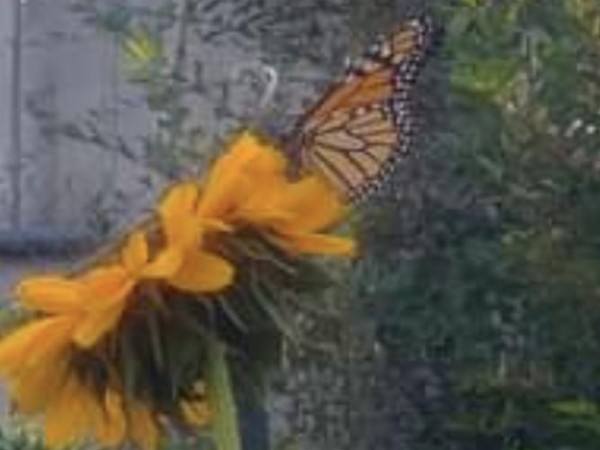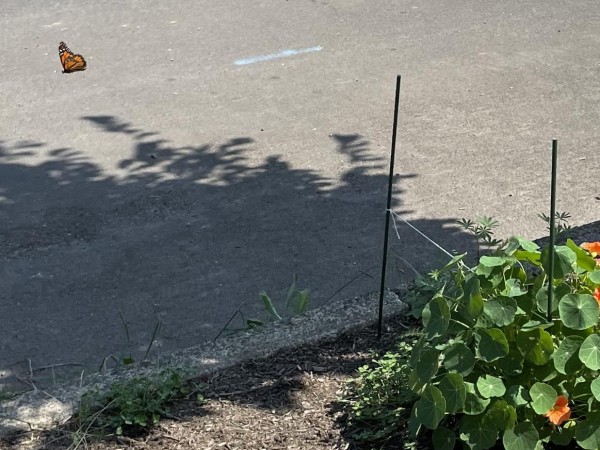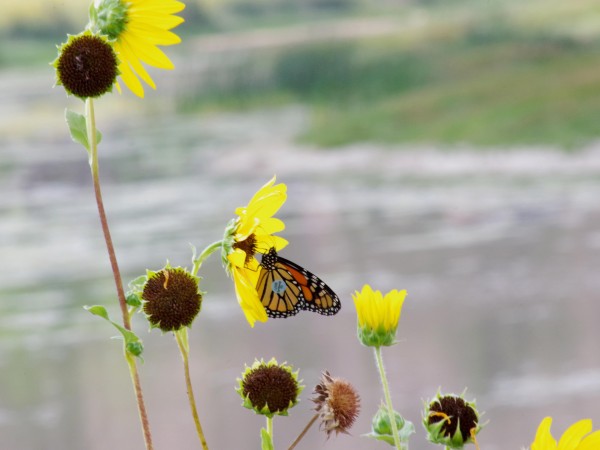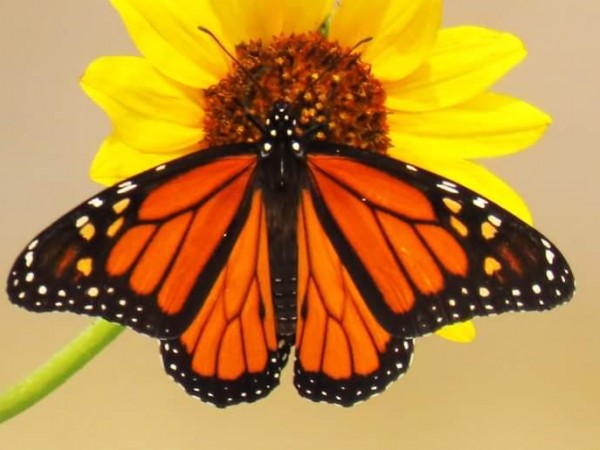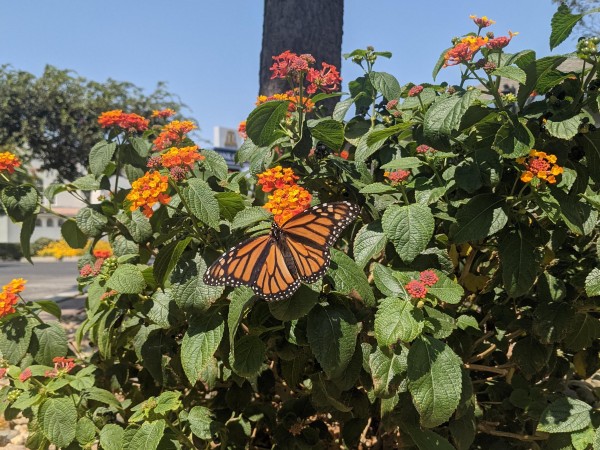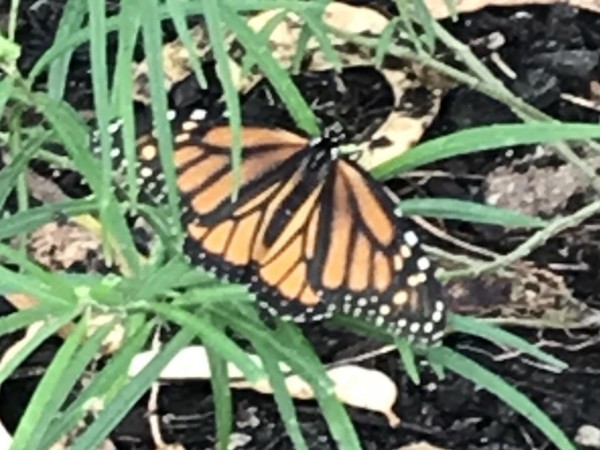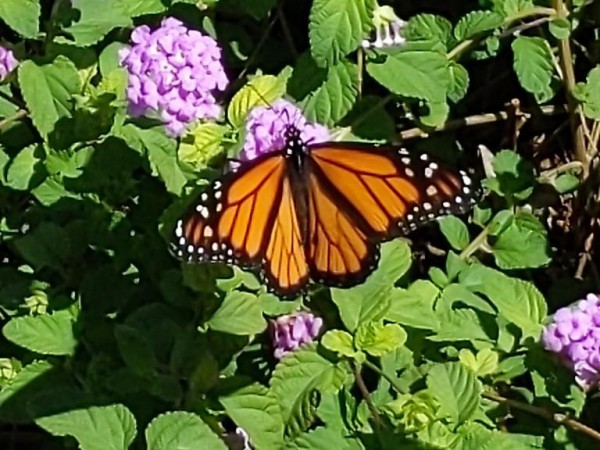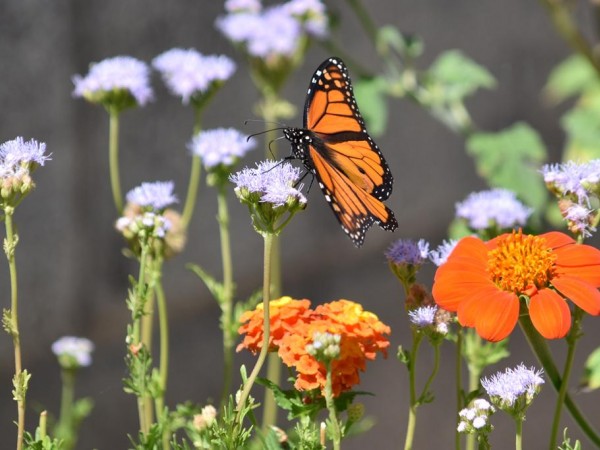Letter from Gail Morris: Western Monarch Fall 2021 Report #1
Published: 09/08/2021
Dear Western Monarch Friends,
Change is in the Air! Monarchs in the Northern states are beginning to show directional flight as the annual monarch butterfly Fall Migration gets underway! This has been a summer of anxiety in the West. Everyone yearned to see monarchs but many were not sure that they would. Many locations were blessed with more monarchs than expected given the low overwintering population in the West. Other areas saw monarchs for the first time in many years. A new sighting with photo from British Columbia, Canada, reveals monarchs entering Canada in the West for the first time in many years.
Monarch Sightings
Reports appeared from many Western states. Each sighting is important and together they provide a larger picture. Keep in mind for every reported sighting there are many more monarchs in the area – your sighting is an indicator of monarch activity. So, what did we see? Here are a few examples.
An exciting find! Holly spotted a monarch and photographed it in Okanagan-Similkameen, British Columbia, Canada! “First one in 10 yrs. I have seen in this valley.”
In Portland, Oregon, Kate found one monarch by her house. “So great to see a monarch in my front yard!”
In Utah, “S” reported 10 monarchs at “Latitude: 40.880, Longitude: -109.163: Tag # BR571” on August 21. This location is East of Flaming Gorge and the Colorado state line near the Green River that weaves through this region. Be sure to see the Southwest Monarch Study tagged monarch in the picture.
Annete in Brigham, Utah, spotted 3 monarchs on August 22. “We saw 2 male Monarchs and 1 we couldn't confirm. All 3 were spotted nectaring on sunflowers with milkweed patches nearby. We felt lucky to see them considering the high winds the night before and heavy rain throughout the week.” Note the monarch excellent wing condition in her photo.
Victoria in Rio Vista, California, just South of Sacramento, noted one monarch on August 22. “Was feeding up and down main street going for all the lantana varieties.”
Samantha enjoyed one monarch in Tucson, Arizona on August 17. “Female monarch feeding on Arizona milkweed.”
Lucie in Santa Fe, New Mexico, reported 5 monarchs on August 16. “Temp was 84 degrees. Cloud cover 50 %. Seen between 8:15 am and 11 am. They were nectaring or flying around blooming horsetail milkweed.”
Hyla in Pima, Arizona, spotted her first monarch of the year on September 2. "1st Monarch I've seen this year feeding on lantana."
Angele in Elephant Butte, New Mexico, noted a monarch enjoying Gregg's Mistflower on September 3. "Beautiful male enjoying Gregg's Mistflower. Hands down favorite flower for several species. I don't see monarchs every year. My tiny garden is full of butterflies this year."
Fall Migration Monarch Activity Changes
Antonio is an intern at Dinosaur National Monument in Vernal, Utah, this summer and has lived in the fields monitoring and tagging monarchs these past few weeks. Through the first week of August, Antonio observed monarchs laying eggs on Showy Milkweed, Ascelpias speciosa, in the field. He watched them shift to favor laying eggs on the smaller, newer shoots of A. speciosa as well. But suddenly the monarchs changed their behavior. Instead of milkweed, the fresh and new monarchs flew to nearby sunflowers and Joe Pye Weed in bloom as their nectar favorite. Antonio has been tagging monarchs in the region working together with other federal and private partners. Recently he tagged 64 fresh and new monarchs and only resighted 14 in the days afterward. This is an indication that these monarchs are likely on the move – a harbinger of the beginning of the Fall Migration now in progress.
Get Ready!
Be sure to have fall blooming nectar available to feed monarchs on their long journey to the overwintering sites. Look now for key plots of migration nectar maturing to bloom and be ready to enjoy this spectacular event. Keep your camera or phone handy and take photos to report to Journey North.
Report your sightings!
Always report your monarch sightings in every life stage. Keep a camera in hand to document your findings and include as much information as possible such as what the monarch was doing, feeding on or any noteworthy find. Thank you for your support. Your contribution of data increases the understanding about monarchs.
Gail Morris is the Coordinator of the Southwest Monarch Study (www.swmonarchs.org), a Monarch Watch Conservation Specialist, and the Vice President of the Monarch Butterfly Fund and the Central Arizona Butterfly Association. The Western Monarch Population News is based on comments provided to Gail Morris. We hope to increase the number of sightings and therefore photos and comments entered into the Journey North. We rely on the volunteers who communicate regularly with Gail and who agree to participate in our effort to increase awareness of the population of western Monarchs. You can reach her at gail@swmonarchs.org.

